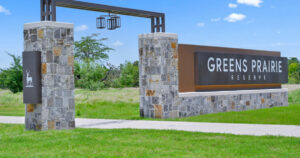Concerns Mounted as Residents Voice Issues with Raised Medians in Bryan-College Station
BRYAN-COLLEGE STATION, Texas – A dedicated group of residents from the Bryan-College Station area recently made a trip to Austin, determined to bring attention to some pressing concerns regarding the raised medians installed along major roads in their community. Highlighting the impact on both emergency response times and local businesses, the group presented their case to the Texas Transportation Commission Thursday.
At the heart of the issue is the BCS Medians Survey Project, a grassroots group that claims the newly constructed medians are doing more harm than good. During an open comment session at the meeting, residents shared alarming anecdotes and statistics illustrating their concerns. One member, Joey Ganem, illustrated the situation with a striking example: “There is a video of a fire truck that drives four-and-a-half minutes past an accident to do a five-point turn on a major street.” The implication was clear: the medians may be creating serious roadblocks in emergency situations.
Safety Concerns Emerge
Another group member, Karen Hall, elaborated on these safety concerns, noting that U-turns on Texas Avenue have become increasingly hazardous due to the road’s narrow width. “Most vehicles are forced to do three-point U-turns,” she pointed out, which can lead to complicated maneuvers and potential accidents.
Aside from safety, the economic implications of the raised medians were also a significant focus during their presentation. Hall emphasized that “immediately after the medians were put in, sales tax revenue drops significantly. Several businesses have already closed.” This stark reality illustrates how changes to road infrastructure can ripple through the community, affecting not just drivers but the livelihood of local entrepreneurs.
A Mixed Bag of Perspectives
According to the Texas Department of Transportation, raised medians are intended to minimize crashes and improve overall traffic flow, especially in areas that are newly developed. However, Ganem expressed skepticism regarding their effectiveness in established neighborhoods. “They work great in those newly developed areas. In areas that are established, not so much,” he remarked, asserting that not every main road in their town requires a median.
The group of residents was hopeful that their voices would lead to tangible changes, although they understood that the Transportation Commission could not take immediate action. “We want to open a dialogue and ensure that our concerns are heard,” said Ganem, conveying a sense of optimism even in the face of adversity.
Feeling Heard and Making an Impact
As the crowd turned their attention back to the meeting, it was evident that this group of residents was not just a handful of individuals, but rather a community fighting for its welfare. Their willingness to travel to Austin to express their concerns shows a commendable commitment to making Bryan-College Station a safer and more economically vibrant place for everyone.
As the discussion around road safety and local business impacts continues, residents are reminded that every voice matters. While their recent trip to Austin didn’t yield immediate solutions, it laid the groundwork for potential changes in the future. With ongoing conversations and advocacy, the Bryan-College Station community may soon see a reevaluation of the raised medians and how they can be adjusted to better serve the needs of both residents and businesses alike.








